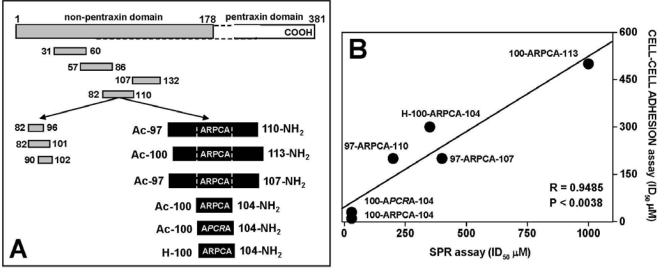Figure 5.
FGF2-antagonist activity of PTX3-derived peptides. A) Schematic representation of the peptides (in grey) spanning the N-terminal domain of PTX3 utilized for the identification of the amino acid sequence 97–110 as the FGF2-binding domain in PTX3 [92]. The synthetic peptides based on the PTX3(97–110) sequence and used for the analysis shown in panel B are reported in black. B) Relationship between the potency of the peptides to inhibit FGF2/FGFR1-IIIc interaction in a SPR assay and HSPG/FGF2/FGFR1 ternary complex formation in a FGF2-dependent CCA assay [expressed as the concentration of peptide required to obtain 50% inhibition (ID50)]. (Data from both the assays were the mean of three independent experiments, performed in duplicate for CCA assay).

